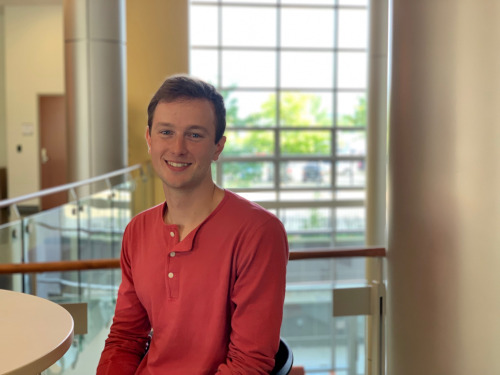
First-year medical student Matthew Sila was enjoying a night out with friends on Broadway in Nashville, Tennessee on Labor Day weekend when he saw something that didn’t seem right.
A man was slumped in the doorway of a closed business. His friends towered over him, but didn’t seem to be helping him.
Sila said his instincts kicked in, and he approached the man. Armed with weeks of Medical First Responder training, he assessed the man, making sure his airway was clear, he was breathing and that he had a pulse.
The man was breathing, but it was slow. His pulse was fast, and his pupils were constricted, a sign Sila learned could indicate a drug overdose. Then Sila noticed the track marks on his arm, which indicates intravenous drug use. The man’s friends weren’t much help, only saying he “might have had a little too much,” Sila said.
Sila said he called 911.
“I explained to them what I saw and that there was someone down on the main drag and that they needed to send paramedics,” he said.
A pair of paramedics walked across Broadway after finishing another call. The paramedics gave the man Naloxone.
“The paramedics told me they had it from there and then I went on my way with my friends,” Sila said.
Sila and other students in WMed’s Class of 2023 receive training and are certified as medical first responders during their first year at the medical school. The seven-week course qualifies students for state and national certification as medical first responders. MFR training is part of the medical school’s curriculum, which provides early exposure to the clinical setting, and the course equips students to respond when someone is ill or injured and provides instruction on basic procedures, including taking vital signs, performing CPR, bandaging and wound care, among other things.
The training continues for students after their first year with an advanced cardiac life support course along with field trainings and training in the medical school’s Simulation Center.
Sila had about a month of medical first responder training when he encountered the man in Nashville, and said it was because of that training that he felt comfortable approaching the man to help him without hesitation.
“You think you’d know to check to see if someone’s breathing, but procedurally doing it over and over again, it was kind of already ingrained in me. I knew exactly what to do when I stepped up to see what was wrong with him. I had a good idea of what to say to the paramedics when they showed up and to 911 about what was wrong with him.”
Sila said without the medical first responder training he had gone through just days before the incident he wouldn’t have felt comfortable approaching the man.
“I would have seen someone down and I would have called 911 or asked someone else to help who knew what to do,” Sila said.
Sila said the medical first responder training isn’t what drove him to choose WMed, but said it’s something different the medical school offers to students. He said it’s beneficial to all medical students, whether they want to work in emergency medicine or just want to be a good bystander. It also is a good introduction to clinical medicine, he said.
“Something like this is super beneficial and it gives you fundamental knowledge of caring or trauma situations or everyday instances,” Sila said.
